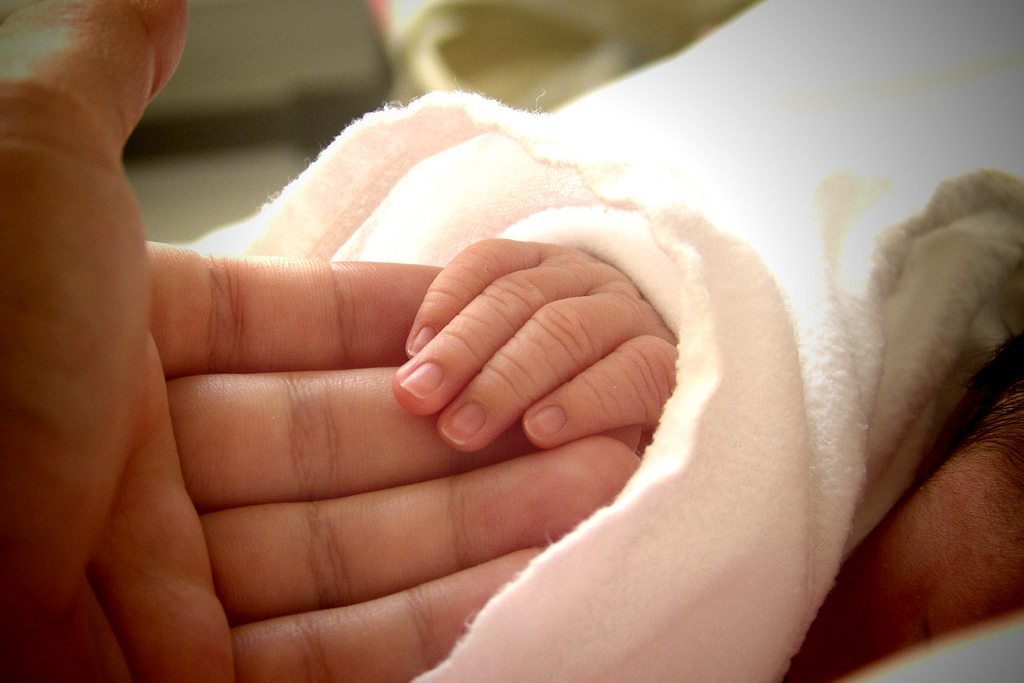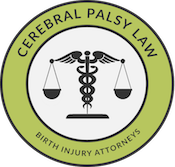Cerebral Palsy Attorneys in Ann Arbor, Michigan
Cerebral palsy, often abbreviated to CP, is a condition affecting the brain and nervous system. Cerebral palsy is caused by damage to the developing brain and often results in complications including movement abnormalities, cognitive difficulties, seizure disorders, and impairments of the senses. While there is no single cure for cerebral palsy, a wide-ranging variety of therapies, resources, and procedures have rehabilitative effects on the social, emotional, cognitive, and physical impairments associated with cerebral palsy.
Medical professionals are obligated to closely monitor any possible pregnancy complications that may result in cerebral palsy. If you believe you or a loved one were not aptly treated or monitored for a medical condition and your child was born with cerebral palsy, we encourage you to reach out to our Ann Arbor cerebral palsy lawyers today—call us at (888) 592-1857 or fill out our online contact form and our birth injury lawyers will evaluate your case for free and answer any of your legal questions.
Cerebral Palsy in Ann Arbor: What Causes Birth Injuries?
Ann Arbor Cerebral Palsy Lawyers Discuss Medical Malpractice and CP
Ann Arbor, a city in Michigan recognized for its top-notch medical centers, is home to some of the most advanced health care facilities in the Unites States—the University of Michigan Medical Center, CS Mott Children’s Hospital, and the entire University of Michigan Health System are innovators in both research and practice. Despite their fine reputations, however, negligent labor and delivery errors still occur at the University of Michigan Health System’s medical facilities. Our Ann Arbor cerebral palsy lawyers have decades of experience handling cases in which Ann Arbor medical professionals fail to properly identify, treat, and manage the following conditions and complications:
Hypoxic Ischemic Encephalopathy (HIE; birth asphyxia): HIE, a type of brain injury inflicted on infants around the time of birth, occurs when a lack of oxygenated blood reaches the brain. The subsequent neurological damage results in lifelong side effects and complications including seizures, mild to severe cerebral palsy, infant brain damage, and even fetal death. Hypoxic ischemic encephalopathy is often the result of medical errors and negligence around the time of delivery—below, we will discuss how the mismanagement, misdiagnosis, or failure to treat certain complications of pregnancy and delivery may lead to HIE.
- Umbilical Cord Complications: Because the umbilical cord is responsible for the passage of important nutrients, blood, and oxygen from the mother to the baby, it goes without saying that any interruptions to its functioning increase a baby’s risk of developing HIE and cerebral palsy.
- Nuchal Cord: A nuchal cord occurs when the umbilical cord wraps around the baby’s neck—a type A nuchal cord wraps around the neck in a loop that can undo itself, and a type B nuchal cord wraps around the baby’s neck in a way that cannot be undone. Nuchal cord causes include long umbilical cord length, multiple gestations (twins, triplets, etc.), macrosomia (a condition in which the baby is larger than average), nutritional deficiencies, excessive amniotic fluid, and malpresentation (such as the breech presentation). Nuchal cords are associated with injuries including umbilical cord prolapse, vasa previa, HIE, and decreased fetal development.
- Umbilical Cord Prolapse and Compression: A prolapsed umbilical cord occurs when the umbilical cord falls into the birth canal before the baby during labor and delivery. A compressed umbilical cord occurs when the cord becomes squeezed between the baby’s body and the uterus, cervix, or pelvis during delivery and the passage of oxygenated blood and nutrients is restricted. Prolapsed and compressed umbilical cords are often caused by the premature rupture of membranes (PROM), malpresentation (such as face or breech presentation), premature birth, excessive amniotic fluid, multiple gestations, and long cord length.
- Birth Trauma: Excessive forces and stresses of labor and delivery sometimes injure the infant and lead to intracranial hemorrhages. Intracranial hemorrhaging, also known as brain bleeding, occurs from the following complications:
- Delivery Assistance Tools: The incorrect use of vacuum extractors and forceps can cause bleeding within a baby’s skull. When medical professionals use too much force, twist the baby’s head and neck, or pull with too much force, the use of forceps and vacuum extractors may result in brain damage, HIE, and cerebral palsy.
- Hyperstimulation and Strong Contractions: The cumulative effects of strong uterine contractions, hyperstimulation, and difficult and prolonged labor can result in a lack of oxygen reaching the baby’s brain. Strong contractions and uterine hyperstimulation are often activated by any factor that limits the easy, natural progression of a baby through the birth canal—these factors may include size abnormalities such as cephalopelvic disproportion (CPD) or macrosomia. They also are often the result of the labor-induction drugs Pitocin or Cytotec (Misoprostol). The result is fetal distress, hypoxic ischemic encephalopathy (HIE), umbilical cord compression, head trauma and intracranial hemorrhages, uterine rupture, and related conditions.
- Failure to Perform C-Section: When fetal distress is imminent, the failure to quickly order and perform a Cesarean Section birth can exacerbate or cause brain bleeding and head trauma with resultant HIE and cerebral palsy.
- Maternal and Fetal Health Complications: Any undetected, undiagnosed, and unresolved health problems in the child or the mother can lead to neonatal birth asphyxia, brain damage, and cerebral palsy. Below are some such health issues:
- Maternal Infections: Chorioamnionitis, villitis, Group B Strep (GBS), urinary tract infections (UTIs), and bacterial vaginosis are some of the more common maternal infections that lead to birth injuries when left untreated. Maternal infections, particularly those in the pelvic region, transfer quickly to the fetus through tissues, blood, umbilical cord gases, and other bodily fluids.
- Maternal Medical Complications: Gestational diabetes, oligohydramnios (shortage of amniotic fluid), vaginal birth after C-section (VBAC), and preeclampsia (pregnancy-induced high blood pressure) are all manageable maternal conditions that must be handled within the parameters of care standards. Failure to identify and manage these conditions often results in irrevocable brain damage including cerebral palsy and HIE.
- Infant Illnesses: Some fetal/infant illnesses and complications that, when left untreated, may result in HIE and cerebral palsy include jaundice and kernicterus, sepsis and meningitis, and fetal stroke.
- Early and Late Delivery: Preterm and post-term deliveries both come with a number of dangerous complications that can cause HIE and cerebral palsy. Premature birth is one of the most common causes of HIE and cerebral palsy because infants’ underdeveloped organs aren’t able to withstand the insults of delivery. Post-term pregnancies increase the likelihood of weakened placental functioning, birth restrictions from larger fetal size, cord compression, and meconium aspiration.
- Uterine Rupture: This labor and delivery emergency occurs when the stresses of labor cause the uterine to tear open, often expelling the unborn baby into the mother’s abdomen. Uterine rupture is more common in women that have previously undergone a Cesarean delivery (VBAC). The result of uterine rupture is often hypoxic ischemic encephalopathy (HIE), cerebral palsy and other forms of lifelong brain damage, or even fetal death.
We encourage you to reach out to the Ann Arbor cerebral palsy lawyers at our birth injury law firm if you have any questions or case inquiries related to the complications and injuries listed in this section.
The Signs and Symptoms of Cerebral Palsy and Infant Brain Injury
Diagnosing brain damage or CP can be a long, complicated process—sometimes, doctors are able to identify and diagnose cerebral palsy at birth using diagnostic tools like imaging and the APGAR score. Other times, CP isn’t apparent until the child is older. In this section, our Ann Arbor cerebral palsy lawyers discuss some of the signs that help families and medical professionals indicate brain damage in a child.
- Failure to reach developmental milestones on time. For instance, the failure to blink, sit up, or control movement are common indicators of brain damage.
- Mental deficiencies and learning disabilities
- Gait abnormalities such as lopsided crawling, favoring one side of the body, or delayed walking
- Abnormal head size
- Poor head and trunk control
- Decreased muscle tone (hypotonia)
Legal Help for Cerebral Palsy in Ann Arbor, Michigan
Ann Arbor Cerebral Palsy Lawyers & Attorneys Making a Difference
 While Ann Arbor offers impressive and extensive opportunities and resources for children rehabilitating from birth injury, specialized medical and therapeutic attention is very expensive. At Michigan Cerebral Palsy Attorneys, our Ann Arbor cerebral palsy lawyers understand that children need ample financial support to take full advantage of the many cerebral palsy resources available through health care providers such as the University of Michigan Health System. If you think your child suffered a birth injury as a result of medical negligence, we urge you to call our experienced Ann Arbor cerebral palsy lawyers. We will use our wealth of specific experience to determine whether or not you have a case. Email or call us toll-free today at (888) 592-1857 for your free legal consultation. If our Ann Arbor cerebral palsy lawyers take your case, you will not be charged until they win or settle in your favor. In the meantime, we encourage you to reference our Ann Arbor Cerebral Palsy Resources page for more information about cerebral palsy in your city.
While Ann Arbor offers impressive and extensive opportunities and resources for children rehabilitating from birth injury, specialized medical and therapeutic attention is very expensive. At Michigan Cerebral Palsy Attorneys, our Ann Arbor cerebral palsy lawyers understand that children need ample financial support to take full advantage of the many cerebral palsy resources available through health care providers such as the University of Michigan Health System. If you think your child suffered a birth injury as a result of medical negligence, we urge you to call our experienced Ann Arbor cerebral palsy lawyers. We will use our wealth of specific experience to determine whether or not you have a case. Email or call us toll-free today at (888) 592-1857 for your free legal consultation. If our Ann Arbor cerebral palsy lawyers take your case, you will not be charged until they win or settle in your favor. In the meantime, we encourage you to reference our Ann Arbor Cerebral Palsy Resources page for more information about cerebral palsy in your city.
